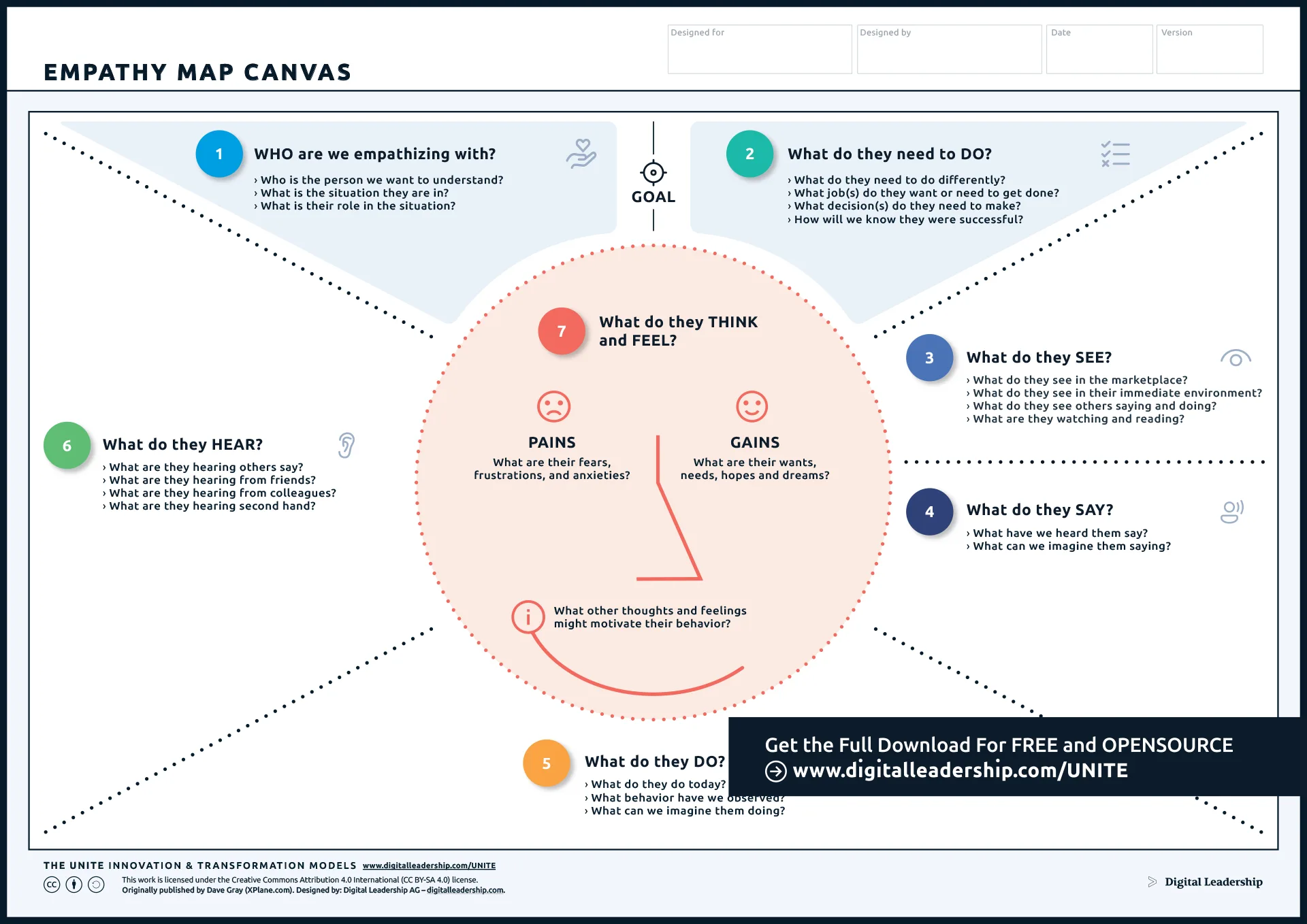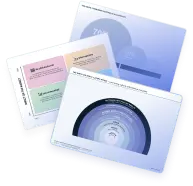Customer Experience Design and Digital Innovation
Published: 30 March, 2023
Experience Design

Table of Contents
In this article, Digital Leadership AG partner Patrick Zimmermann explores the concept of Customer Experience Design, which is the process of creating products, environments, and interactions that provide a specific and valuable experience to the end-user.
He explains that CX Design goes beyond just the user interface and involves the user’s emotional, cognitive, and physical engagement with the product or service. Patrick emphasizes the importance of CX Design in today’s digital age, where customers expect meaningful, memorable, and enjoyable experiences.
What is Customer Experience Design?
Customer Experience Design is the process of designing products, environments, and interactions to create a specific and meaningful experience for the end user. When thinking about Experience Design, we typically consider interaction design, service design, and user experience (UX) design, as well as aspects of the user’s journey and their emotional, cognitive, and physical engagement with the product or service.
The goal of Customer Experience Design is to create products and services that are not only functional, but also meaningful, memorable, and enjoyable for the user. It should affect the priorities of an entire company, pushing it to deliver more valuable experiences to the customer.
Customer Experience Design is an essential element of business strategy as it empowers companies to develop products and services that deliver a competitive edge and fuel growth. At Digital Leadership, we offer Customer Experience Consulting and Customer Experience Strategy services to support organizations in comprehending their customers’ needs, preferences, and challenges. Through our Customer Experience Consulting service, we enable businesses to achieve their growth objectives by prioritizing customer satisfaction and crafting exceptional experiences. Furthermore, our Customer Experience Strategy service is tailored to assist businesses in creating impactful and immersive user experiences that align with their overall business goals.
In the field of digital innovation, Customer Experience Design is frequently reduced to efforts to create a pleasant, efficient user interface. While it’s true that customers need and expect their on-screen experience to help them solve problems without adding to their frustration, CX Design can be—and should be—much more.
Customer Experience Design in Motion
CX Design happens where two important realms meet: Business and Design. These two disciplines have to ultimately join forces to ensure that customers are receiving and recognizing the maximum value in a way that also keeps them engaged with your product or service.
Our understanding of Customer Experience Design is evolving into a greater understanding of the scope of “experience,” extending from the interaction with an interface, towards a more holistic, omnichannel customer experience. An ecosystem of touchpoints that all tell a coherent story that includes a relationship between our business and our customer’s needs.
Technology enables a vast assortment of interaction points between a customer and a company. Customers instinctively expect a consistent experience across a multitude of channels. Today, moments of interaction are extended across time into a continuous flow of contact. It problematizes how we think of Customer Experience Design because our relationship with customers is far more complex.
UX vs. CX — User Experience vs. Customer Experience
User Experience (UX) and Customer Experience (CX) are two related but distinct concepts.

Let’s take a look at what makes each one different from the other:
User Experience:
- Concerned with user’s interaction with product or service
- Considers ease of use, functionality, design, and customer satisfaction
- Wants to optimize the user experience
Customer Experience:
- Interested in the customer’s relationship with a brand or company
- Analyzes all interactions, including marketing and advertising, the purchasing experience, and customer service
- Focuses on a customer’s experience with the company as a whole
While UX design strategy and CX design strategy have nuanced differences in their focuses, both are important for building strong relationships with customers and creating positive experiences that can lead to loyalty, strong word of mouth, and repeat business.
Making Design More Human “Human-Centered Design”
We are seeing innovation focus more on the user and less on the technology itself. As we step toward Human-Centered Design, we consider more than just the hands or eyes that interact with our products, but the emotional being in control of that body.
Human-centered design is an approach to design that prioritizes the needs, wants, and limitations of the end user, rather than those of the manufacturer or designer. It is an iterative process that involves close collaboration between designers and the people who will actually be using the product or service and seeks to understand their perspectives and experiences in order to create designs that are truly effective and appealing.
The focus on the human aspect of design is what sets human-centered design apart from other design approaches. Rather than designing for aesthetics or technical feasibility alone, human-centered design considers the emotional, cognitive, and physical aspects of the user’s experience. This often results in designs that are not only functional, but also intuitive, appealing, and enjoyable to use.
The Business is the Product
We understand more and more that customers want to engage with the businesses they patronize. We know that customers are more likely to choose businesses whose business practices reflect the customer’s social or political priorities. Businesses build these priorities into their Experience Design; even a neutral stance is a stance, and the decision to not convey social and political priorities is a decision that some customers appreciate.
It becomes therefore clear that the pure focus on the customer-product interaction as the framework for which to design seems outdated. It is time to think beyond the product and also use the company as an added value to the product. By actively making the company part of the business offering, there is a necessity to not only design the product but to also “design” the company. Not by making it look prettier, but rather by making sure that there is a shared understanding of what the company stands for.
The goal is to create an authentic environment from which the customer can actively pull back the curtain dividing the customer and the company.
The Role of Customer Experience Design in Business Strategy
Customer Experience Design plays a crucial role in business strategy as it helps companies create products and services that deliver competitive advantage and drive growth. Here are a few ways in which Customer Experience Design can contribute to a company’s success:
- Customer satisfaction: Customer Experience Design focuses on creating a positive and memorable experience for the end user, which can lead to increased customer satisfaction and loyalty.
- Differentiation: By creating unique and compelling experiences, companies can differentiate themselves from their competitors and establish a strong brand identity.
- Innovation: Customer Experience Design encourages designers and businesses to think beyond the functional requirements of a product or service and explore new and creative ways to engage with customers.
- Increased efficiency and effectiveness: Customer Experience Design considers the entire customer journey and seeks to optimize it in a way that is efficient and effective for both the customer and the business.
Overall, Customer Experience Design is a key component of a successful business strategy, as it helps companies create compelling and meaningful experiences that drive customer satisfaction, differentiation, innovation, and growth.
The Process of Customer Experience Design
Customer Experience Design is the process of intentionally building the interactions and experiences customers have with a company. The goal is to create a positive and memorable experience for the customer.
Here are the main steps involved in the process of customer experience design:
(1) Research & Discovery
The first step in the process is to research and understand the needs, preferences, and behaviors of your target customers. This can be done through surveys, interviews, focus groups, and other research methods.
(2) Developing User Personas
A customer persona is a fictional representation of your target customer, based on the research you have conducted. We use the research to build a model of our customers to help us think of them not as data, but as living, breathing people who look to us to help them complete important jobs.
Customer Personas help you understand the customer’s goals, motivations, and pain points, and design experiences that meet their needs.
The UNITE Empathy Map

Originally published by Dave Gray (XPlane.com). Designed by Digital Leadership AG
Digital Leadership recommends the UNITE Empathy Map to help you develop your Customer persona. They can be very helpful for putting us in a customer’s shoes.
The Empathy Map leads you through a series of steps so you can best understand the entire customer experience. They are an important element of both UX design and CX design.
(3) Customer Journey Mapping
Here, we map out the various customer touchpoints and interactions that a customer has with the company, from initial awareness to post-purchase support. This helps you identify the key moments when the customer’s experience can be improved.
Customer Journey Map
A Customer Journey Map outlines the ways customers interact with your company. They are helpful in understanding a person’s experience with a company, from first contact from advertising and marketing, through to post-purchase.
The end-to-end experience a customer has with a company is a vital opportunity for us to boost their buy in and build customer loyalty. It’s also an opportunity to misjudge a target audience or scare off potential customers. Customer interactions shape the attitudes they have toward our companies. Good interactions create loyal customers.
A Customer Journey Map has tremendous value for the customer experience designer, so we’ve made it available here to download.
(4) Ideation & Prototyping
Based on your research and customer journey mapping, develop a strategy for creating a positive and consistent experience for your customers at every touchpoint. This may involve changes to your products, services, or processes, as well as improvements to your customer service and support.
Create prototypes of your proposed changes and test them with customers to gather feedback and refine your designs. This can be done through usability testing, A/B testing, or other methods.
(5) Testing, Validation & Implementation
Once you have finalized your designs, implement them across all customer touchpoints and monitor the results. Collect customer feedback and measure key metrics such as customer satisfaction, retention, and loyalty.
Let your internal teams develop methods to measure a customer satisfaction score and use the data and up-to-date information to drive how you respond to customer needs.
Your Customer Experience team can use the feedback and data you collect to continuously improve your customer experience design, making changes and updates as needed to ensure that your customers are consistently satisfied and engaged with your brand.
Conclusion
Without a clearly articulated customer experience strategy, you’re missing out on countless opportunities to develop a customer base that can sustain your company for years to come.
Customer and User Experience are a collaborative effort, each a key part of your overall business strategy as important as product and service design.
Are you meeting customers where they’re at? Are you making deliberate decisions to keep customers happy? Are you engaged in customer conversations that make it clear you prioritize all these interactions?
We’re here to help.
Download The UNITE Empathy Map
Your first steps toward exceeding your customer expectations begin now.
Begin your customer experience strategy by downloading the UNITE Empathy Map today.

Originally published by Dave Gray (XPlane.com). Designed by Digital Leadership AG

































 Book How to Create Innovation
Book How to Create Innovation